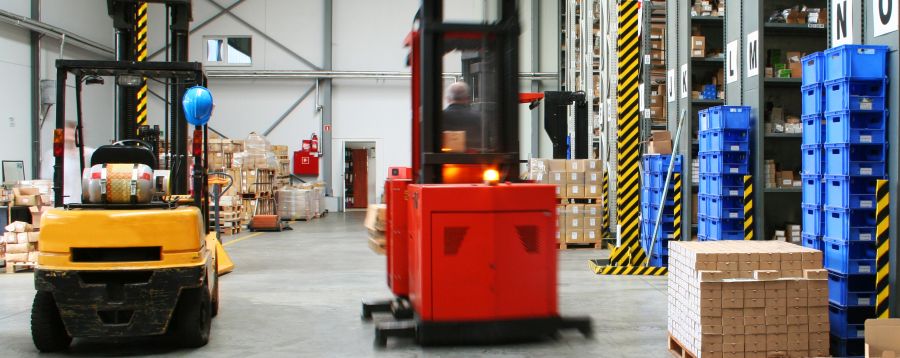
Make Every Day Forklift Safety Day

Forklifts are a leading cause of accidents in warehouses and industrial settings, contributing to some 75 deaths each year. Many deaths – and countless more incidents – result from unsafe practices such as speeding, not wearing a seatbelt or raising workers on a pallet to reach high levels.
In an effort to improve forklift safety across the country, members of the Industrial Truck Association (ITA) sponsored the fifth annual National Forklift Safety Day on June 12 in Washington, D.C. The annual event provides an opportunity for the industry to educate the public, policymakers and government officials about the safe use of forklifts and the importance of proper operator training. Forklift operator training can improve operator performance scores 61 percent, according to OSHA.
ITA Chairman Scott Johnson says the main message of the event is the importance of forklift operator and pedestrian safety. He adds that by working together, different stakeholders (manufacturers, dealers, employers and employees, and federal and state safety officials) can drive continued declines in the forklift accident rate.
“We know from the data that better operator training is critical, so we’ll continue to promote it at every opportunity,” Johnson told DC Velocity magazine. “We believe that the OSHA operator-training regulation provides an excellent template for a training and evaluation program, so the most important thing is to increase meaningful compliance with it, especially by smaller companies and for the most vulnerable employees, such as younger operators and temporary workers.”
Improving Forklift Safety
Forklifts, or industrial trucks, can weigh two to three times more than a family car – and that’s before adding a payload. Yet they typically operate in narrow aisles and loading docks alongside pedestrians. Clearly, forklifts present a safety challenge to operators, workers and business owners. Recent safety improvements and innovations include:
- Operators must now be trained on the specific trucks they drive
- Simulators make training easier and more effective
- New forklift safety features lock out unauthorized users
- Safety signage, including directional indicators, warning lights and floor markings, identify safe work areas
- Safety gates for mezzanines and protective barriers for open dock doors help prevent forklift falls and overturns
- Training non-drivers to work safely around forklifts
- Marking walkways with floor stencils or safety tape to clearly define areas for safe movement

